It used to be so simple.
A billboard here. A radio or television commercial there. Perhaps a print ad or two thrown in for good measure. That was your marketing strategy, and it worked.
Want to watch the latest episode of The Dukes of Hazzard? You had to sit through that commercial for cereal. Enjoying an “article” in the new issue of Playboy? You at least glanced at the ad for the new Volkswagen as you flipped the pages.
Marketing messages were everywhere as they are today, but one thing has fundamentally shifted in favor of the consumer: they now have the ability to tune them out, skip them entirely, or block them completely.
DVR allows viewers to fast-forward through commercials. Podcast and YouTube ads can be skipped immediately or after a few seconds. Streaming services like Netflix and Amazon Prime are commercial-free. Good old-fashioned terrestrial radio is on life support.
And let’s not forget about AdBlock and similar services. A tiny extension or a standalone browser dedicated to better user experience like Brave lets you stop them in their tracks. These tools either block or filter advertising content from websites, pages, and apps. Consider:
- Ad blocker penetration is pegged at 18% in the United States. That number is even higher in Canada and many parts of Europe.
- There were 600 million devices with ad blocking software in December 2016, and 62% of those were mobile.
- Reasons for using the technology include exposure to malware, interruption, speed issues, too many ads, and privacy concerns.
- eMarketer predicts that 30% of all internet users will be blocking ads by the end of 2018.
We’ve entered the Age of Ad Blocking. And banner blindness. And instant gratification. Patience may be a virtue, but it seems to be in dwindling supply. Ain’t nobody got time for commercials and ads.
And if you think the solution is using an adblock wall – restricting or prohibiting access to content until users turn it off – think again: 74% will simply leave your site.
It might seem a catch-22. You need ads to market your products and/or monetize your website. You need to attract visitors to click those ads. But those same visitors claim to despise ads.
Look at the reasons why people use ad blockers for some quick insight. According to PageFair:
And according to MarketingSherpa:
And according to Hubspot:
You’ll notice quite a bit of overlap. People don’t like sketchy ads, intrusive ads, ads that negatively affect page performance, ads that are irrelevant, ads that are annoying, and more.
What takeaways can you glean from that? It’s a straightforward list of what not to do with your advertising and messaging.
So, is marketing dead? Far from it.
Despite the seemingly overwhelming odds, marketers are still able to get their message across in an ad-blocking world. How? By adapting to the changing landscape. If the old ways don’t work, you have to find innovative new ways. Intrusive ads that interrupt the user experience are out. Honest, timely, and relevant “ads” are in.
Say hello the rise of Digital Advertising 3.0.
Influencer Marketing
In the simplest terms, an influencer is a content creator or personality with a relatively large following on a given platform. Their popularity or expertise gives them a great deal of clout with their fans.
But they need not be celebrities in the traditional sense of the word. Individuals like Kim Kardashian, Katy Perry, and Justin Bieber have tens of millions of followers, but that doesn’t automatically make them a good fit for you and your brand.
In fact, research has shown that influencers with fewer than 1000 followers – often called micro-influencers – saw likes 8% of the time, and comments 0.5% of the time on their posts and shares. Celebrities with 10+ million fans? Those numbers plummet to 1.6% and 0.04% respectively.
Influencer marketing is a partnership with an influencer to review, promote, or link to your content, brand, and products. It’s widely used and considered one of the most cost-effective and powerful strategies used today. Interest in it grew 90x between 2013 and 2016, and doubled again in the first nine months of 2017. 2018 looks to be no different.
And because there is no “ad” in a sense, nothing is blocked or filtered. This puts your message in front of as many eyes as possible, and if you’ve done your homework beforehand in finding the right influencer, it’s a targeted audience.
If you haven’t tried it yet, there’s no time like the present. A few things to remember:
- Decide on the most appropriate platform for your ideal customer. Are they business professionals? You’ll do better on LinkedIn. Are they teenagers? Snapchat is a safe bet.
- Move away from targeting just the numbers. Kim Kardashian has 58.6 million followers on Twitter, but she’s probably not the best fit for your new email marketing service. Look for micro-influencers – say 50,000 or less – active in your industry or popular with your target audience.
- Check a potential influencer’s post history before making contact. You don’t want to discover objectionable, racist, or sexist material after they’re already linked to your brand.
- Finding the right influencer is the most important part of the whole strategy. Take your time. Do it right.
- Look at the engagement a typical post generates. Is it getting plenty of likes, shares, and comments?
- Next, follow them. Engage with their content. Leave genuine comments. Then, reach out to them via email or a private direct message. Talk about why you think a partnership would benefit you both, and how your product fills a need for their audience.
- Don’t give them too much or too little in crafting a message that will resonate with their audience. Work together.
Done right, influencer marketing bypasses ad-blockers and delivers marketing that people actually want to see. Teenagers on YouTube, for example, trust the opinion and recommendations of influencers more than celebrities. They relate better to them, and believe the influencer understands them as well or better than their friends.
Native Advertising
Traditional online ads try and stand out from the background. They might use a different font or color. They might flash, or wiggle, or bounce. They might autoplay a video or audio clip.
They want you to notice them. And that’s their downfall: traditional display ads are very easy for blockers to identify and filter.
That’s where native advertising comes in.
Native ads mimic the digital environment in which they appear. They try and blend in. They don’t want to interrupt the user experience in any way, and ideally, they don’t even want you to notice it’s an ad at all. In fact, they might only be discernible as an ad by the Sponsored or Promoted tag most sites place on them.
Click a native ad, and it usually leads to a page that looks and feels like a regular blog post or article. It can easily be shared.
But it still has a message. The post includes or features the brand, product, or service being promoted in some way. It often has a call-to-action such as signing up to receive a special report or newsletter.
You’ve encountered native ads in your daily web browsing, even if you don’t realize it. They’re very popular on news and aggregate sites:
Scroll down the top stories on Yahoo, and you might not even notice the “Sponsored” tag on the post about an investment opportunity. It looks like any other article (with perhaps a bit of a clickbait headline).
Click on it, and you’re taken to a landing page that looks like a blog post. It mentions that Jeff Bezos – the richest man in the world – is pouring millions into a new tech innovation. Others are following his lead.
What is it? Just enter your email and download the free report.
The post is a native ad for The Motley Fool to collect leads for their financial services. And it works because there’s nothing to block. Users choose to click it.
Google search ads are another powerful example of native ads at work. For any given search query, you’ll be presented with thousands of organic results…and a few paid ones, too. These are identified by the Ad tag, but otherwise look exactly like a regular search result.
Facebook in-feed ads are considered the most lucrative type. As you’re scrolling through your account feed, you’ll encounter them all the time, but they blend in with posts from your friends, family, and pages you follow.
Some are a bit more obvious, like this ad for ChinesePod, an online platform to learn Mandarin. It’s definitely an ad, but because it appears in your feed rather than your sidebar – and includes like, shares, and comments – it takes on the appearance of a regular post.
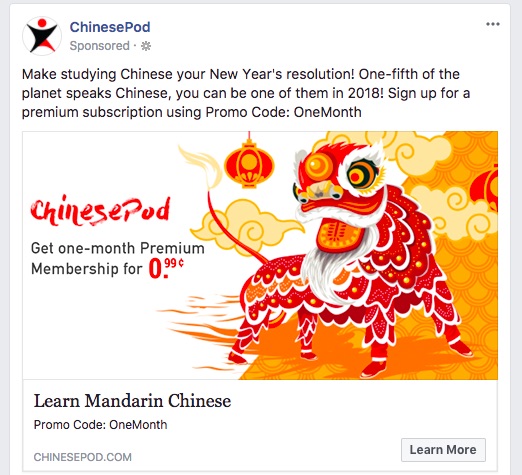
Others appear decidedly un-ad like, like this one promoting the new Netflix film The Cloverfield Paradox. You’ll notice the Sponsored tag if you look for it, otherwise it just seems like someone posted the trailer for a cool new sci-fi movie. From the stats at the bottom, we can see hundreds of thousands have watched it, thousands have liked it, and hundreds have shared and commented on it.
In essence, it’s an ad that’s not an ad. And that’s the most powerful and effective type of ad you can create.
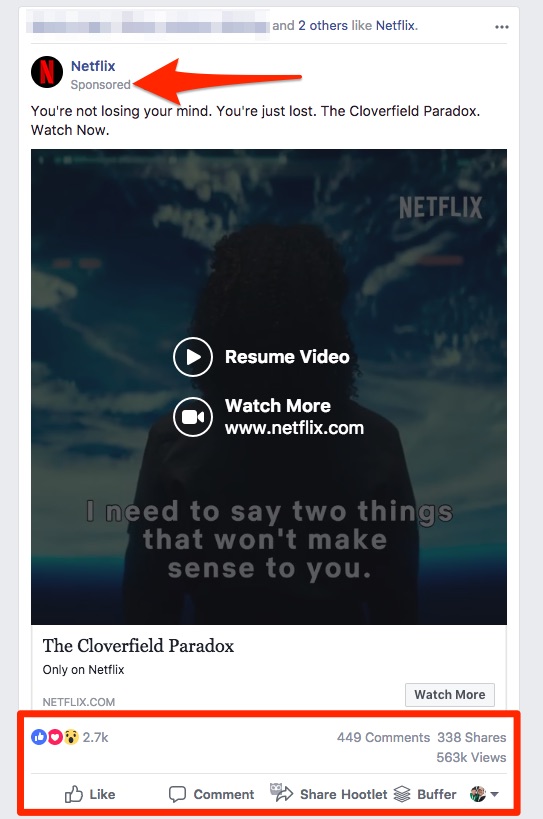
With this “ad”, Netflix has generated interest, excitement, and buzz for its latest big budget release.
Yahoo’s recent Perception Study found 4 key components to a native ad that produces a positive impression:
- Photos of people rather than objects
- Legible and identifiable logos
- Short format (15 seconds or less) videos
- Prominent brand name placement
Native ads can generate a click-through rate (CTR) 4x higher than non-native display ads, and they’re predicted to generate 74% of ad revenue by 2021.
Want to experiment with Google search ads? Go through Google. Facebook in-feed ads? Contact Facebook. For various news and aggregate sites, you’ll need to work with a native ads network such as Native Ads, Outbrain, Taboola, or Nativo.
And if you want some inspiration, check out a few spectacular native ad examples.
Native ads are not a fix-all. You still need to find the right platform(s) for your target market, and deliver relevant and timely “ads”.
Social Ads
You don’t need me to tell you just how popular social media is today. We spend more time on social platforms like Facebook, Instagram, Snapchat, LinkedIn, Twitter, and others than we do on any other type. It’s our favorite online activity.
There are over 2 billion monthly active users on Facebook, 800 million on Instagram, 500 million on LinkedIn, 330 million on Twitter, and 178 million on Snapchat. Worldwide, there are 3.03 billion active social media users (compared to 3.82 billion internet users). That’s a massive potential reach and audience.
So it makes sense that social ads are taking over.
Everyone spends time there. And it’s relatively easy to blend in and make your ads appear less like ads and more like shares, posts, and tweets.
Every social media platform now offers the ability to advertise and market in some way. Facebook makes the majority of its revenue – the vast majority – via selling ads space to businesses. In 2017, it earned $39.94 billion in ad revenue, up 49% from the $26.85 billion it made in 2016.
The story is the same for Instagram, Snapchat, Twitter, LinkedIn, and others. Ad revenue is big, big bucks. But as an SMB, you don’t have to spend millions, or even thousands, to get in on that action.
On Facebook, you can work with sponsored posts, in-feed video or image ads, or more traditional banner ads. Instagram? Sponsored posts, Stories, or video ads. Twitter? Promoted tweets and hashtags. YouTube? Video and banner ads. L
source https://blog.kissmetrics.com/ad-blocking-world/
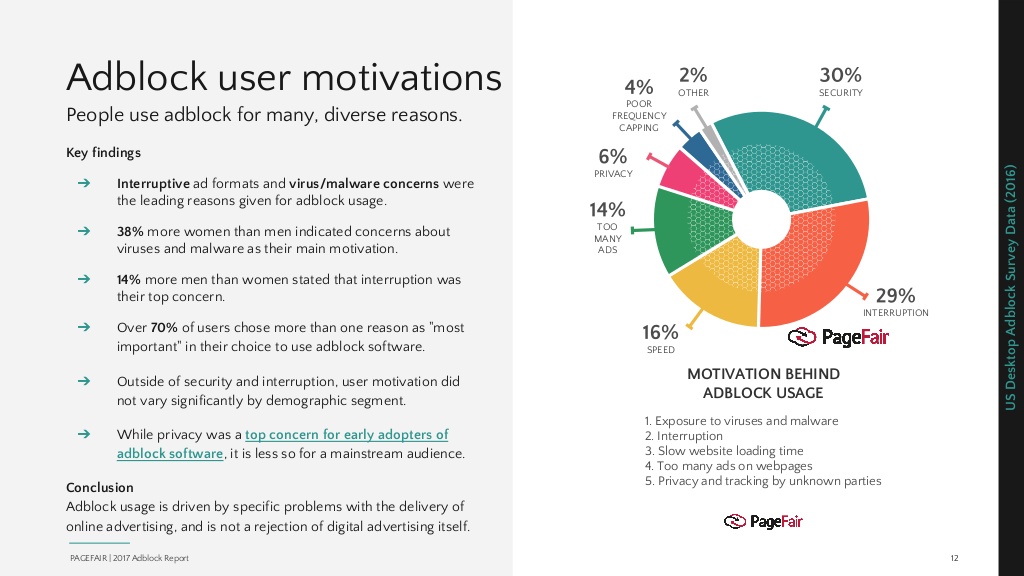
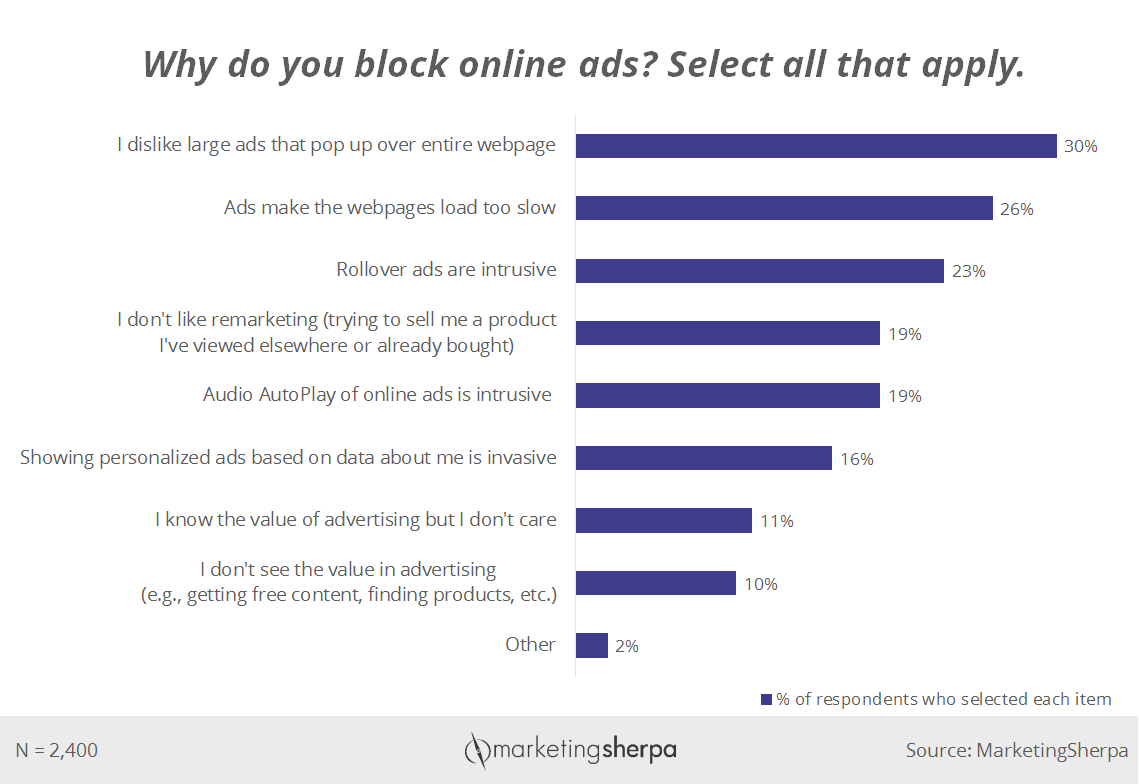
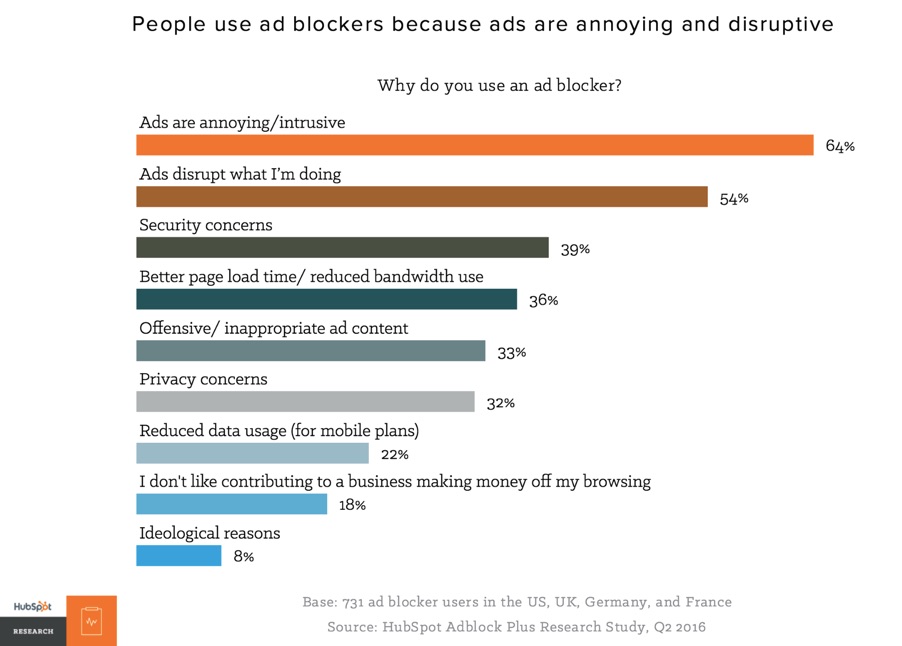
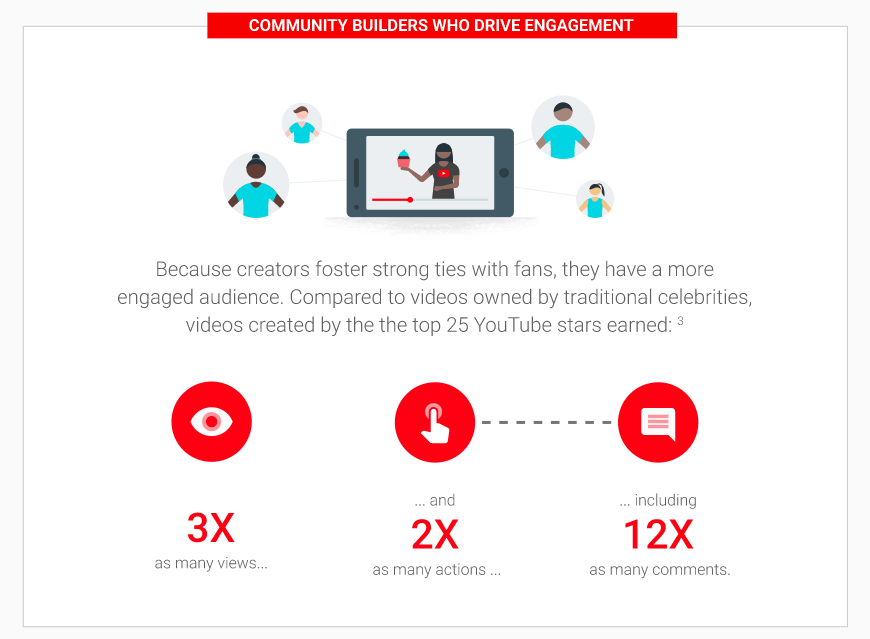
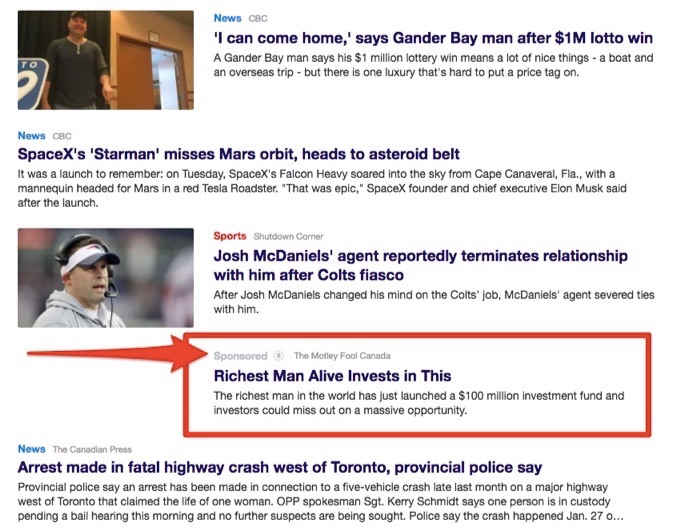
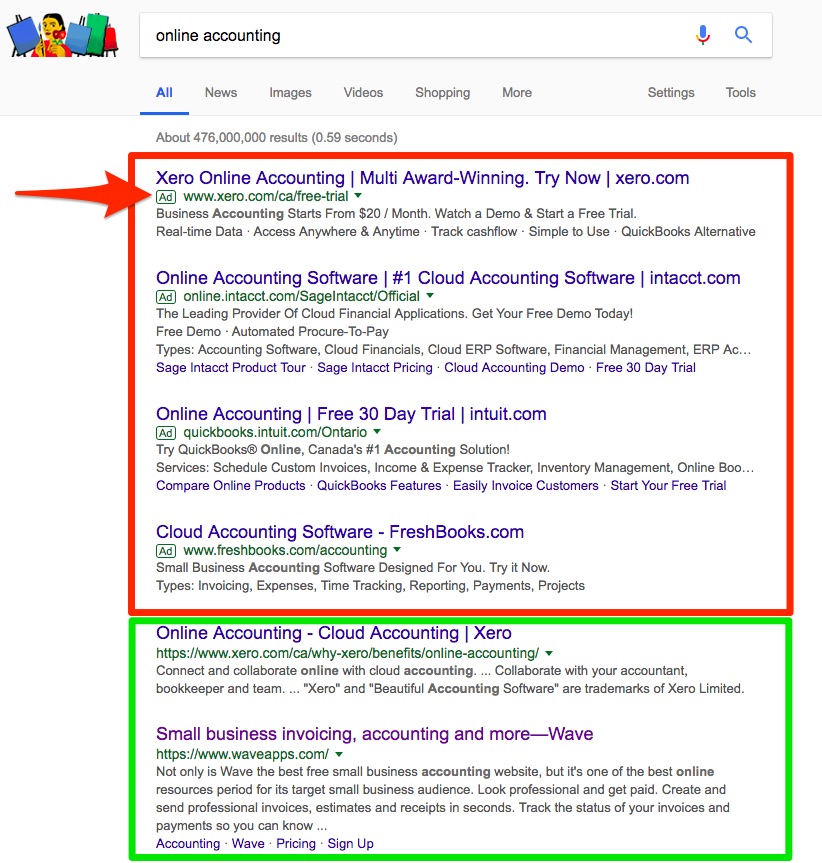
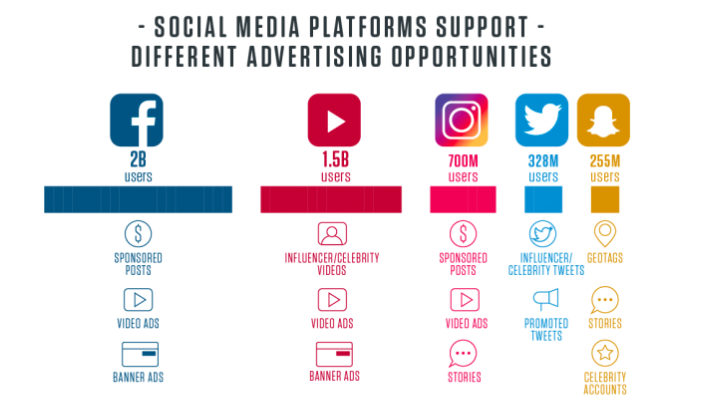
No comments:
Post a Comment